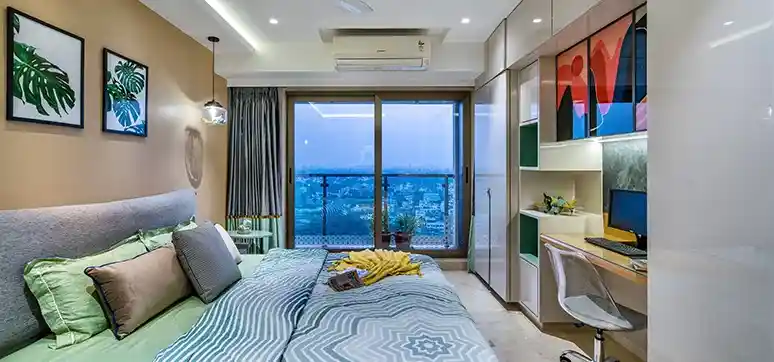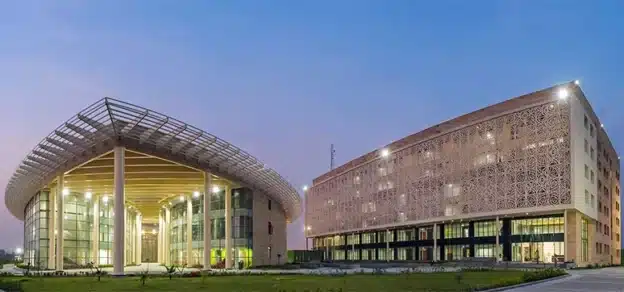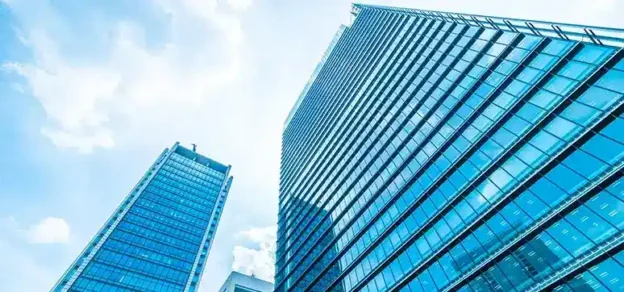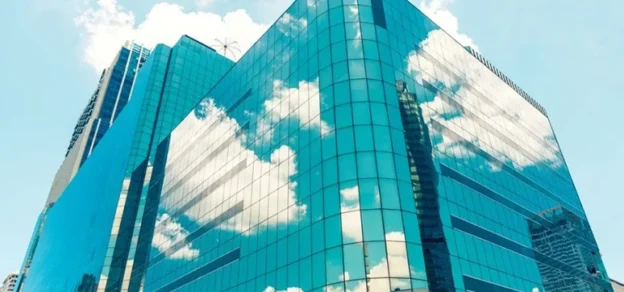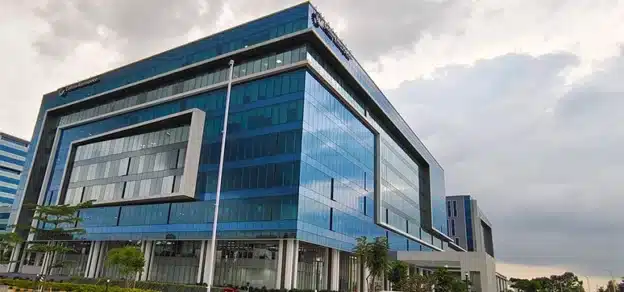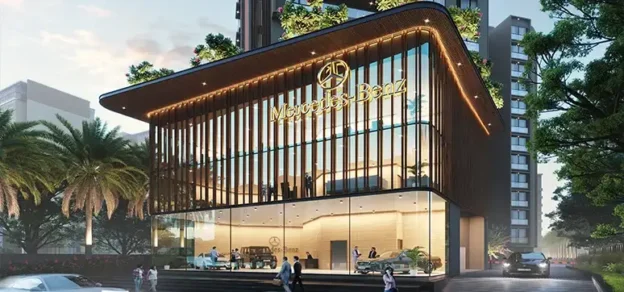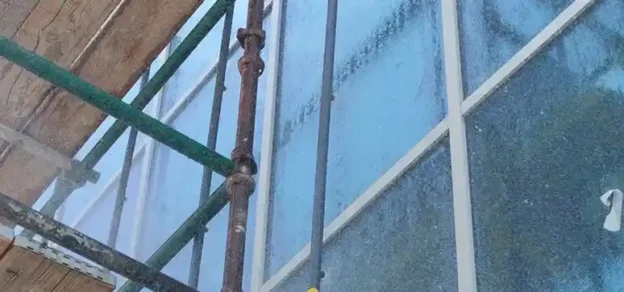The use of glass in building design has become increasingly popular over the years for the unparalleled benefits it offers. Today, architects and designers consider glass as the go-to material, not only for the aesthetics it delivers but also for the performance it assures. It is the only material that blends the exteriors with the interiors, seamlessly bringing the outdoors inside. In this article, we will look at the ways and means by which glass adds value to any building, be it commercial or residential.
AESTHETICS
Glass can be used to create a range of visual effects in building design. When it comes to facades, unlike other building materials, glass scores high on aesthetics by adding colour and character to a building’s façade. As a façade cladding material, glass provides an unobstructed view of the surrounding environment, while tinted, frosted or textured glass can offer privacy and add value in terms of visual interest for interior decor. Talking about interiors, coloured or lacquered glass is one of the most popular new-age trends to take over living and working spaces. It is well-suited for a variety of applications, from table tops to kitchen countertops, from pillars to partitions, and so on.

Glass has the rare ability to magnify spaces; in fact, the use of mirrors is an age-old trick to create a sense of space when there is scope for none. Interior designers look beyond the functional value of mirrors, to use them as a décor element across the home. Mirrors have transitioned from normal to high definition to tinted to LED, making them an indispensable aspect of design and décor.
When designing a building using glass as an aesthetic element, it’s important to work with experienced professionals who understand the intricacies of glass design and installation. Architects, engineers, and glass manufacturers are actively collaborating to create edifices that are both visually stunning and functional.
ENERGY-EFFICIENCY
Glass can positively impact the energy efficiency of a building. The use of energy-efficient glass in windows and facades can enhance natural daylighting even while cutting down the incoming heat, thus reducing the need for artificial lighting & cooling. This results in lesser energy costs that otherwise go towards additional lighting and air-conditioning. India being a tropical country with excessive light and heat, the solar performance of glass is critical in building design. When made into double-glazed or triple-glazed units, energy-efficient glass can provide improved solar performance.
SAFETY
The glass used in building design must be able to withstand external impact. Toughened or laminated glass can provide improved impact resistance and is a common choice for high-traffic areas. Toughened glass is significantly stronger than normal glass and is break resistant. In the rare event of breakage, it breaks into small, blunt pieces, causing no harm. Laminated glass comprises two or more pieces of glass with a PVB (Poly Vinyl Butyral) interlayer. In case of breakage, this interlayer holds the glass in place so that shards are not strewn around and cause injury. It is ideal as a vandal-proof glass. Fire is another risk that must be factored in. Today, glass can be made fire-resistant and aids at multiple levels. In case of a fire breaking out in a building, the fire-resistant glass acts as a barrier by compartmentalising fire and preventing the spread of fire and smoke. A passive protector, a fire-resistant glass, given its transparency, helps detect a fire early and facilitates quick action during emergencies. Today, there are also other enhanced variants of safety glass that help protect against attacks, bullets, and blasts.
SUSTAINABILITY
Sustainability is a key consideration in modern building design. One must keep in mind the entire life cycle of a building material when evaluating its sustainability, and the use of glass in buildings has been known to play a significant role in achieving sustainable outcomes. Glass is infinitely recyclable which makes it capable of being used repeatedly without losing its quality. It is non-toxic, has a long lifespan and requires minimal maintenance. Glass is not only recyclable, but it is also made sustainably, with very efficient use of resources. Being a lighter material, it is the perfect choice for designing lean and sustainable buildings, the way forward for the future of architecture.
COMFORT

Did you know, glass also has an integral positive impact on various aspects of comfort that occupants experience, such as solar, visual, acoustic, and indoor air quality comfort
• Solar and Thermal Comfort: Solar comfort is an important factor while choosing glass, particularly for tropical climates. In a tropical country like India, where there is excessive solar heat, a solar control glass helps cut down on solar heat gain keeping the spaces less hot. This adds to savings on air-conditioning expenses. For cold climates, a low-E glass helps insulate the interiors from heat loss, enabling warm spaces during cold days and saving on heating expenses.
• Visual Comfort: Natural light is an important aspect of building design, and given its transparency, glass can provide ample natural light. Studies have time and again proven that good natural lighting and outdoor views from private spaces enhance the productivity of the occupants. One can choose from a wide range of glass options according to the light transmission metrics that are needed for a space.
• Acoustic Comfort: Glass is the most preferred material to cut down external noise. The use of glass in acoustic partitions, insulated windows, etc. can considerably make the space sound-proof without hindering the views. Particularly, acoustic glass panels add to the sleekness of a design compared to other traditional and bulkier acoustic materials.
• Indoor Air Quality Comfort: Indoor air quality is critical to occupant health and comfort. Glass is not prone to developing fungus or molds and does not create any odour. Lacquered Glass has nil Volatile Organic Compounds (VOCs) unlike many other painted surfaces and adds to the breathability of the spaces.

• Cognitive Comfort: Studies have shown that glass-enclosed spaces improve the cognitive abilities of occupants. People with access to outdoor views, and naturally well lit and ventilated environments, demonstrate enhanced productivity as well as respond better to crises, than those in claustrophobic surroundings.
VERSATILITY
There was a time when glass connoted just doors and windows. Today, glass has the most wide-ranging applications that have become indispensable to modern living and working spaces. Glass TV units, partitions, cubicles, mirror art, flooring, ceilings, and furniture such as table-tops, tea poys, side tables, etc. are integral to every living room. In the bedroom, glass applications include wardrobe shutters, headboards, wall cladding and pillars. Being an easy-to-clean and hygienic material, it is widely used in the kitchen as countertops, splashbacks and shutters. Shower cubicles and LED mirrors are the faces of contemporary washrooms. In tune with a dynamic generation, there is the dynamic smart glass that can tint automatically on demand and switchable glass that can switch from transparent to translucent states.
Indeed, glass is the ideal material for end users and designers alike, for the sheer benefits it offers – be it from the usage point of view or the design perspective. What’s more, the use of glass in building design can provide a high ROI by reducing energy costs, increasing property value, and improving occupant comfort, by being a durable and long-lasting material. With its diverse uses made possible as a versatile material, glass remains the most preferred choice when it comes to blending aesthetics and performance. Having stood the test of time with its evolving applications, glass will only bring a plethora of possibilities in the years to come.
CASE STUDY
In this case study, we look at the design of a magnificent 6000 sqft penthouse in Chennai. The clever use of glass and mirrors have added depth to this space, which has the blend of a neo-classical and contemporary aesthetic. The versatility of glass is evident in the ceiling design, the home-temple space, and the use of mirrors in the passage, among others. This gives the space an elegant and open vibe and serves as the perfect testimonial of a modern home. Let us have a detailed look at how glass has been thoughtfully used throughout this home.
Glass and mirrors give a spatial quality to the area by increasing the depth & brightness and effortlessly doubling up the space. In the ceiling of the dining area, glass assumes the shape of a wave, while on the walls – it has been used as tiles. Instead of a wall or wooden partition to cover the back side of the home temple, the idea of a fluted glass with a frame gives a sense of continuity that spills into the living room.

Glass being a versatile material, has been used across the home in different ways. Solar control glass for windows helps cut down the heat and humidity of Chennai while bringing ample daylight and giving unobstructed panoramic views of the ocean. There is a narrow passage that flows from one wing to another but to make it look wider, an antique-shaped window with a mirror was added. To make the long wall seem more spacious, mirrors with tiled patterns were incorporated. On entering the passage, a huge curved structural glazing brings the outdoor views seamlessly inside.
In the living space, a prominent column has been cladded with veneer and a brown-tinted mirror, that is subtle and adds elegance to the ambiance. Tinted glass has been interestingly used in the kitchen to make the cabinets transparent, yet not too visible. In the washrooms, LED mirrors have been used to ensure clean and clear images, while doubling up as a piece of art. Glass blends easily with the interior elements provided it is combined with the correct textures, materials and shades. If used in the right manner, it can open up a world of infinite possibilities.
References:
Helmy P. Rethinking The Future. https:// www.re-thinkingthefuture.com/case-studies/a8480-jacobs-medical-Centre-by-cannondesign/
Vitro Architectural Glass. Glass Helps Provide Patients with a Natural, Soothing Environment. Architect Magazine https://www.architectmagazine.com/design/ buildings/glass-helps-provide-patients-with-a-natural-soothing-environment
